LED lighting has 10 important features: lasting up to 50,000 hours with a gradual dimming signal for replacement; composed of multiple chips for prolonged operation; resistance to extreme temperatures (-40°C to +85°C); durability against shocks and vibrations; 80-90% more energy-efficient than traditional bulbs; emits minimal heat and converts 90% of energy into light; recyclable and eco-friendly with no hazardous materials; offers precise directional lighting without reflectors; operates on low voltage with reduced energy consumption; and promotes cost savings, environmental conservation, and enhanced illumination. Find out more about the revolutionary benefits LED lighting offers.
Key Takeaways
- LED bulbs last up to 50,000 hours, outlasting CFL bulbs.
- LEDs are 80-90% more energy efficient, reducing electricity bills.
- LED lights do not contain mercury, supporting eco-friendliness.
- LEDs emit minimal heat, making them energy-efficient and safe.
- LED lighting offers precise directional control without reflectors.
Longevity of LEDs
LED bulbs, boasting a lifespan of approximately 50,000 hours, outshine traditional incandescent and CFL bulbs in longevity. This impressive durability makes them a cost-effective lighting solution in the long run. High-quality LED bulbs can last over ten years with daily use of 8 hours, showcasing their resilience and reliability.
Unlike incandescent bulbs that burn out quickly, LEDs are designed to gradually dim over time, indicating the need for replacement. Additionally, LEDs are composed of multiple LED chips connected in parallel, ensuring that the bulb continues to operate even if one LED fails. This feature enhances the overall lifespan of the bulb, making it a practical choice for energy-efficient lighting solutions.
Compared to compact fluorescent bulbs, LEDs not only last longer but also consume less energy, making them a sustainable option for both residential and commercial lighting needs.
Energy Efficiency
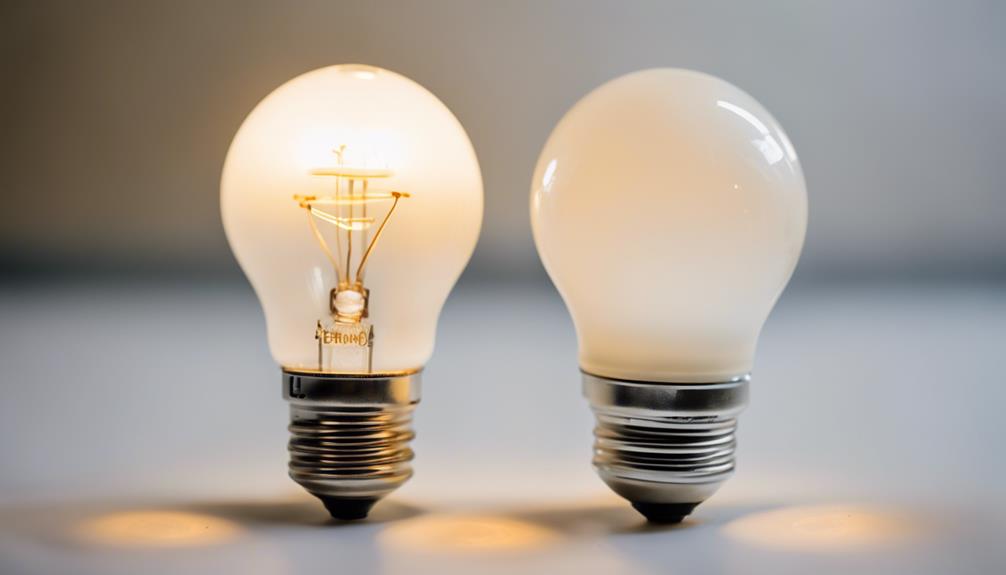
An energy-efficient lighting option that surpasses traditional bulbs in efficiency and longevity is LED lighting. LED bulbs offer exceptional energy efficiency compared to traditional lighting options. Here are some key facts about the energy efficiency of LED bulbs:
- LEDs are 80-90% more energy efficient than traditional bulbs, with 90% of electricity used creating illumination.
- Traditional bulbs release 80-90% of energy as heat, while LEDs emit minimal heat.
- About 90% of energy used by LEDs is converted into light, making them the most efficient lighting option.
- LED lights use energy most efficiently, reducing electricity bills and environmental impact.
- LED lighting lasts 25% longer than incandescent bulbs, offering significant energy savings.
With these energy efficiency benefits, LED lighting not only helps in reducing energy consumption but also contributes to cost savings and environmental sustainability.
Cost Savings

Cost savings from utilizing LED lighting solutions are substantial and impactful, offering both economic and environmental benefits. LED adoption presents a significant opportunity for reducing energy costs, with the Department of Energy estimating potential savings of $265 billion over 20 years. Even small changes, like replacing just 50% of incandescent Christmas lights with LEDs, could lead to massive savings of $17.2 billion.
The efficiency of LED lighting is evident as it can reduce electricity demand for lighting by up to 33%, further contributing to cost savings. Additionally, LED porch lights, with their ability to attract fewer bugs compared to traditional lighting, not only offer cost savings but also bring about environmental benefits.
Choosing LEDs proves to be a cost-effective long-term solution for energy savings, making them a wise investment choice for both residential and commercial applications. By leveraging the energy efficiency and longevity of LED technology, individuals and businesses can enjoy reduced energy bills while also contributing positively to the environment.
Eco-Friendly Lighting
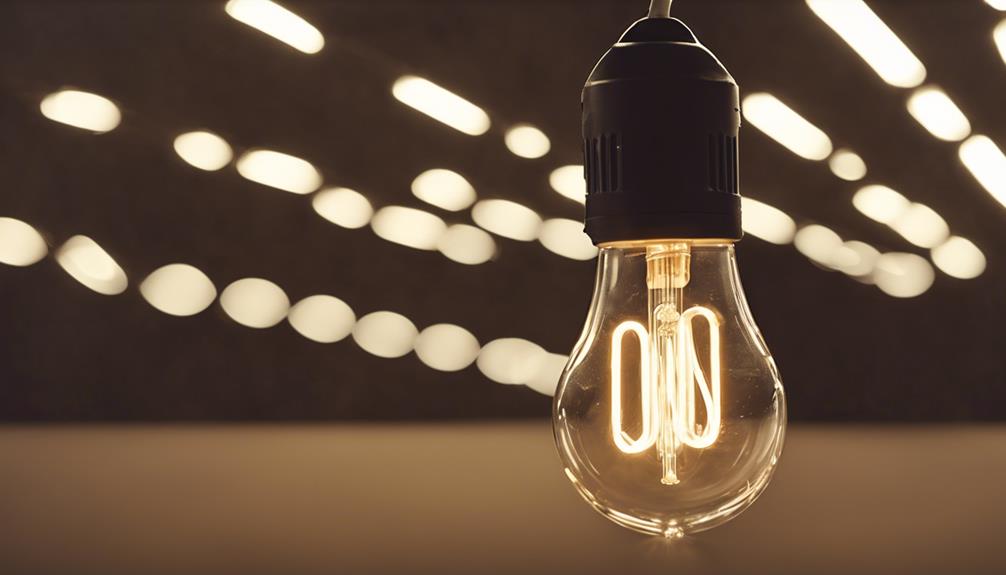
Choosing environmentally friendly lighting options is essential for promoting sustainability and reducing the impact on the environment. LED lighting stands out as an excellent choice due to its energy-efficient nature and eco-friendly characteristics. Here are some key points highlighting the benefits of LED lights:
- LEDs don't contain mercury or hazardous materials, making them safe for the environment.
- LED lights are 100% recyclable, reducing landfill waste and promoting sustainability.
- Unlike fluorescent bulbs, LEDs are eco-friendly and contribute to environmental conservation.
- Opting for LED lighting supports a cleaner and greener living environment.
- Using LEDs in homes and businesses helps reduce the overall carbon footprint.
Durability of LEDs
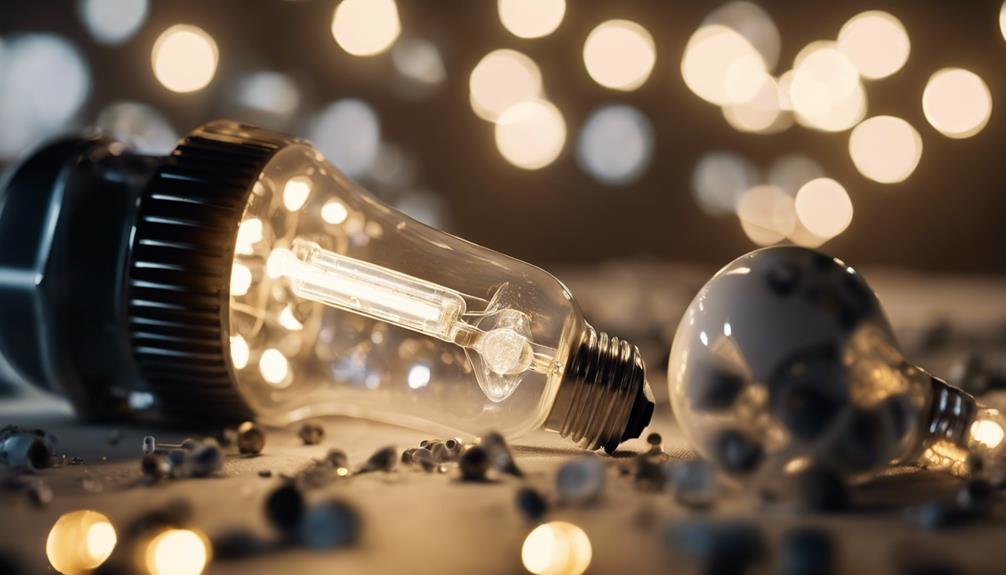
LEDs exhibit exceptional durability, withstanding harsh environmental conditions and maintaining reliability in challenging situations. Designed for long-term use, LED bulbs can operate in freezing temperatures ranging from -40°C to +85°C. Their resistance to vibrations and shock makes them a durable lighting solution, reducing the risk of breakage.
This durability is further enhanced by the robust design of LED lights, ensuring they remain reliable and dependable even in the most demanding environments. Whether facing extreme temperatures or rough handling, LEDs prove to be resilient and long-lasting. This toughness not only increases the lifespan of the LEDs but also reduces the need for frequent replacements, making them a cost-effective lighting option in the long run.
With their ability to withstand a variety of adverse conditions, LEDs stand out as a durable lighting choice for both residential and commercial applications.
Insect Repellent Properties
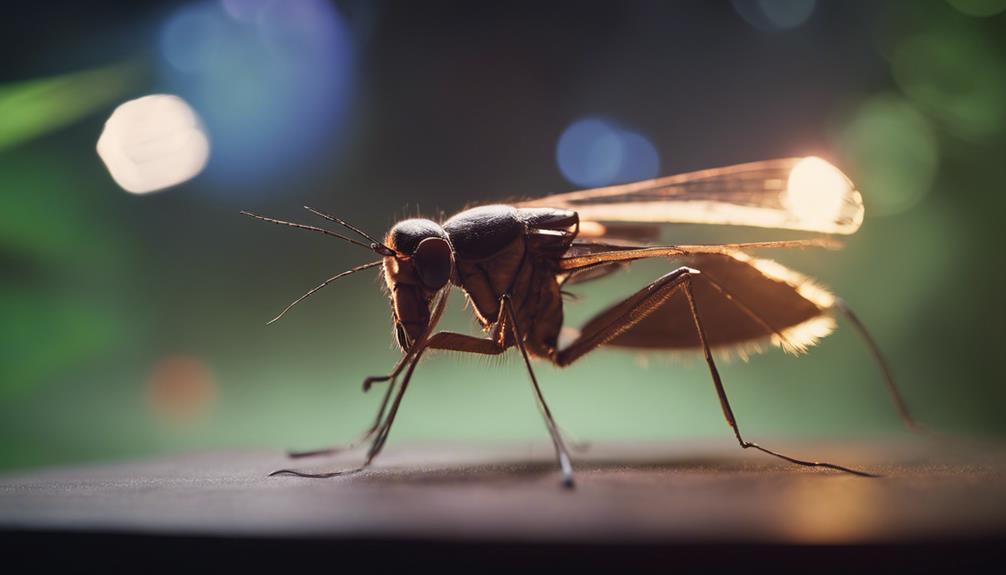
Minimizing insect presence, LED lighting stands out for its unique property of not producing UV and IR rays. This characteristic contributes to reducing the attraction of insects to light sources. Here are some key points regarding LED lighting's insect repellent properties:
- LEDs don't emit UV and IR rays, which are known to attract insects.
- The reduced UV and IR output from LEDs helps minimize insect presence around lighting fixtures.
- Opting for LEDs in outdoor lighting can aid in decreasing the number of insects attracted to illuminated areas.
- While LEDs aren't a complete solution for insect control, their properties make them a favorable choice for reducing insect presence.
- LED lighting is a better alternative for outdoor use when considering insect repellent properties, making it a practical choice for areas where insect control is desired.
Food Preservation Benefits

Blue LEDs offer significant benefits in food preservation due to their antibacterial effects on foodborne pathogens. The use of blue LEDs in refrigerators has been shown to help extend the freshness of food by inhibiting the growth of harmful bacteria.
By harnessing the antibacterial properties of blue LEDs, food can be stored for longer periods without compromising its safety. LED technology has revolutionized food storage practices, providing a more effective way to maintain food quality and safety.
In the food industry, the application of blue LEDs has become increasingly important in ensuring proper food preservation methods are in place. The ability of blue LEDs to reduce bacterial growth plays an essential role in preventing foodborne illnesses and enhancing overall food safety standards.
As a result, the integration of blue LEDs in food preservation techniques has become an indispensable aspect of modern food storage practices.
Directional Lighting
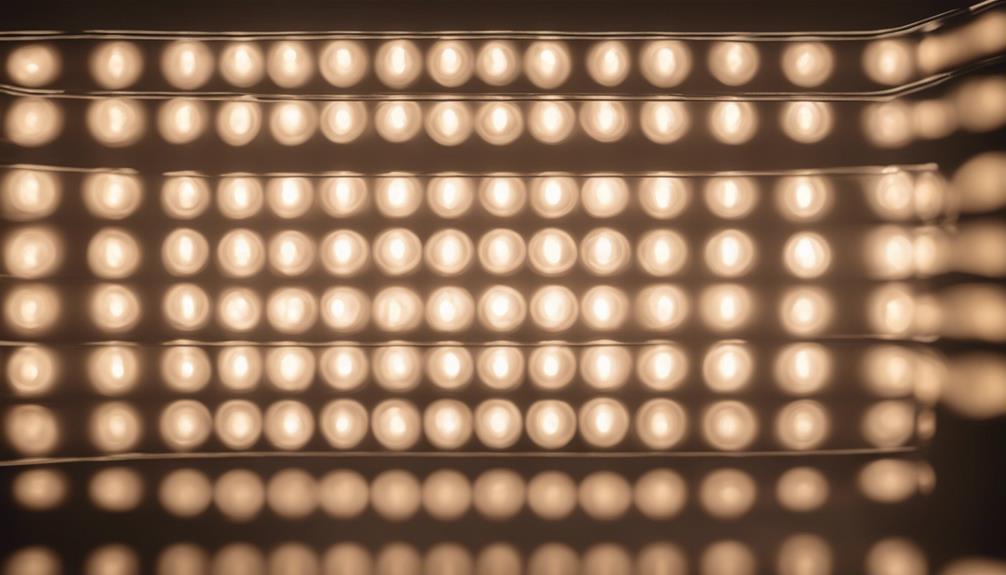
LED lighting is known for its ability to project light in specific directions without the need for extra reflectors. This feature allows for precise beam control and adjustable light angles, making LED systems ideal for focused illumination needs.
With better control over where the light is directed, LEDs offer tailored lighting solutions for various settings.
Precise Beam Control
Enhancing lighting precision, LEDs offer exceptional control over beam direction without relying on reflectors. LED lights can project light in specific directions efficiently, making them ideal for focused lighting needs. Here are some key points about precise beam control with LED lighting systems:
- LED bulbs provide directional lighting capabilities, allowing for precise beam control.
- LEDs emit light in specific directions, enhancing the efficiency of light distribution.
- LEDs offer better control over light direction, ensuring effective light distribution.
- With LEDs, precise beam control can be achieved without external reflectors, suitable for various applications.
- LED lighting systems excel in providing accurate and controlled lighting output, enhancing overall illumination quality.
Adjustable Light Angles
Building on the precision of beam control that LED lighting systems offer, the flexibility to adjust light angles according to specific requirements enhances the directional lighting capabilities to a great extent. LED lighting is designed to project light in specific directions without the need for reflectors, ensuring efficient light distribution.
This feature allows for better control over light direction, making LED bulbs ideal for focused lighting needs. LEDs emit light in specific angles, providing precise illumination in desired areas. Users can easily adjust the light angles to suit their specific lighting requirements, offering flexibility in directing light where it's needed.
LED lighting's capability of directional lighting makes it suitable for various applications that benefit from focused light beams.
Focused Illumination Capabilities
By taking into account precise control over the direction of illumination, LED lighting systems excel in providing focused illumination capabilities for various lighting needs. LED bulbs offer directional lighting capabilities, making them ideal for focused lighting needs in different settings.
Here are some key points to take into account:
- LEDs can project light in specific directions without the need for reflectors, offering efficient light distribution.
- LED lighting systems provide better control over light distribution, allowing for precise illumination.
- LEDs have the ability to deliver light in specific directions, making them suitable for applications where precise lighting control is required.
- With LEDs, users can achieve efficient and effective light distribution without the use of external reflectors, enhancing the overall lighting experience.
Low Voltage Usage
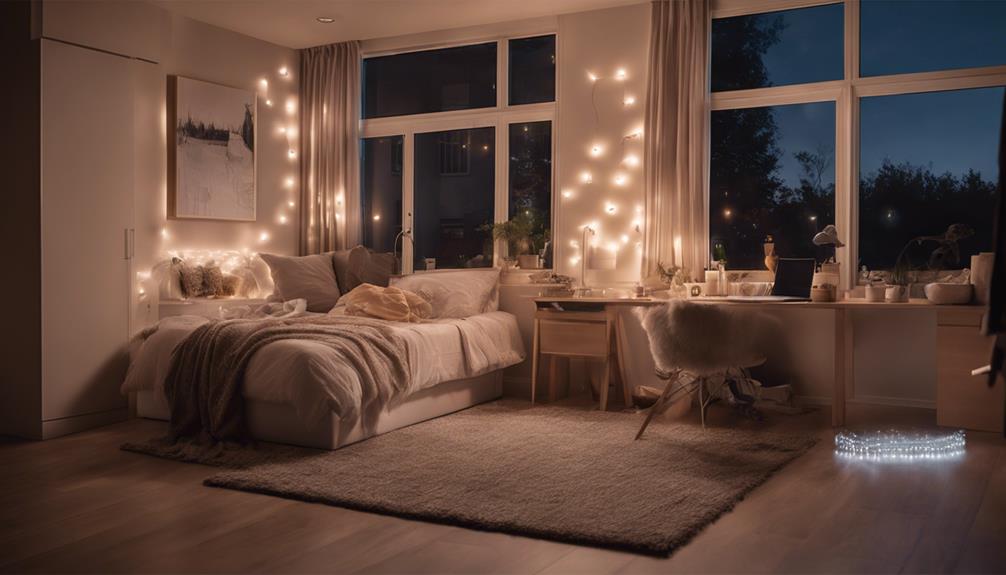
LED lighting stands out for its ability to operate on low voltage power sources, offering a more energy-efficient alternative to traditional bulbs.
This feature not only reduces energy consumption but also contributes to cost savings in the long run.
Energy-Efficient Lighting
Operating on low voltage power sources, LED lighting stands out as a highly energy-efficient lighting option. When compared to traditional light bulbs, LEDs offer significant advantages in energy consumption and sustainability.
Here are some key points to take into account:
- LED lighting requires low energy consumption, making it highly energy-efficient.
- LEDs operate effectively with low voltage power sources, reducing electricity usage.
- Traditional bulbs consume more energy compared to LEDs for the same level of brightness.
- LED lights are compatible with solar panels and other low voltage systems.
- Using LEDs helps save on energy costs and promotes sustainability through efficient lighting solutions.
Cost-Saving Technology
Switching to LED lighting technology can lead to substantial cost savings, especially in low voltage applications. LED bulbs are energy-efficient and cost-effective, requiring low energy to produce light, making them ideal for setups with low voltage requirements. They are compatible with external solar panels, further emphasizing their suitability for low voltage applications. In contrast, traditional bulbs consume more energy than LEDs, highlighting the cost-saving benefits of LED technology. By using LEDs in low voltage setups, significant electricity savings can be achieved over time. The table below summarizes key points regarding LED lighting in low voltage applications:
| Key Points | |
|---|---|
| Energy-efficient | |
| Cost-effective | |
| Ideal for low voltage | |
| Compatible with solar panels | |
| Significant electricity savings |
Color and Dimming Options
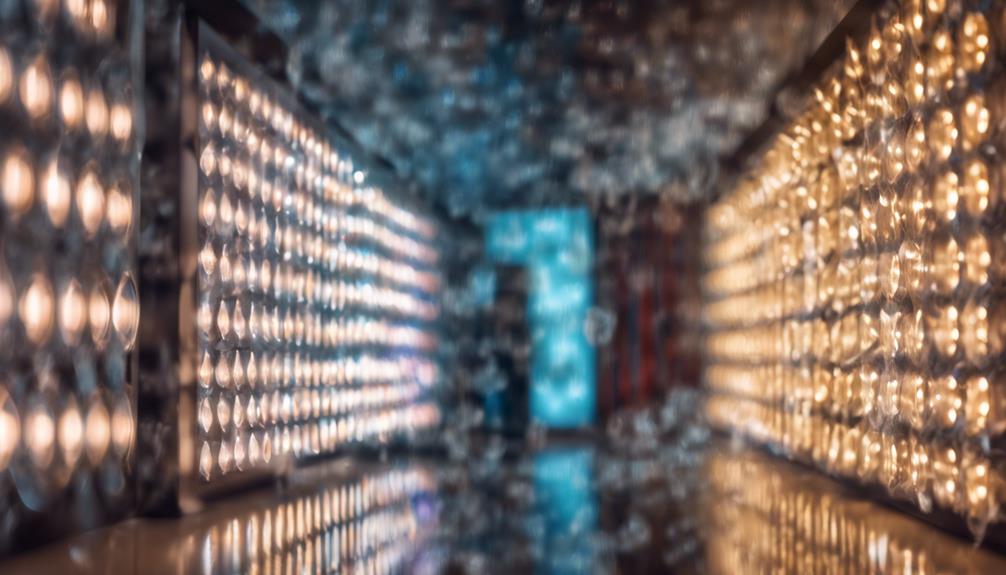
Among the many features of LED lighting, the color and dimming options stand out as versatile tools for creating diverse lighting environments. LED lighting offers a wide range of color options by combining different LEDs to create various atmospheres. Dimmable LED options provide adjustable brightness levels to cater to different lighting preferences.
LEDs can produce colors like red, green, and blue, commonly used in traffic lights and other applications. Blue LEDs have antibacterial effects, making them beneficial for food preservation and safety. LED bulbs provide flexibility in color temperatures and dimming capabilities, enhancing lighting customization. These features allow users to adjust the ambiance of a space according to their needs, whether it be a cozy warm glow for relaxation or a bright, cool light for focused tasks.
LED technology continues to evolve, offering even more possibilities for creative lighting solutions.
Frequently Asked Questions
What Are Some Important Facts About LED Lights?
LED lights are a popular lighting choice due to their energy efficiency and minimal heat emission compared to traditional bulbs. They use energy more effectively, with around 90% of electricity generating light. In contrast, incandescent bulbs waste 80-90% of energy as heat.
This efficiency makes LEDs a smart and eco-friendly lighting option for a variety of applications.
What Are the 4 Lighting Facts?
When it comes to lighting facts, lumens outshine watts when it comes to LED brightness. Higher lumens mean brighter output, making it essential to grasp this concept for selecting the right LED bulb.
Wattage doesn't reliably indicate brightness in LEDs. Checking the lumen count on packaging is key for finding the perfect lighting solution.
What Are 3 Advantages of LED Lighting?
LED lighting offers numerous advantages. It's highly energy-efficient, emitting minimal heat and converting around 90% of electricity into light.
LEDs also outlast traditional bulbs by 25%, making them cost-effective in the long run.
These benefits, coupled with their efficient energy usage, make LED lights a practical and economical choice for lighting solutions.
What Are the Basics of LED Lighting?
LED lighting basics entail several key features that distinguish them from traditional bulbs. These include energy efficiency, an extended lifespan of up to 100,000 hours, the use of lumens over watts for measuring brightness, a range of color temperature options, and eco-friendliness. These qualities not only offer long-term cost savings but also provide customizable lighting solutions. LEDs convert energy efficiently, offer various color temperatures, and contribute to energy conservation and sustainability efforts, making them a popular choice for both homes and businesses.
These fundamentals of LED lighting make them an attractive and practical option for those seeking efficient, long-lasting, and environmentally friendly lighting solutions.
Conclusion
To sum up, LED lighting offers numerous benefits such as longevity, energy efficiency, and cost savings. Despite their initial higher cost, the long-term savings and environmental advantages make them a smart investment.
While some may argue that the upfront expense is a deterrent, the overall advantages far outweigh any initial concerns.
With their durability, eco-friendly design, and customizable features, LED lights are a practical and sustainable choice for modern lighting solutions.




